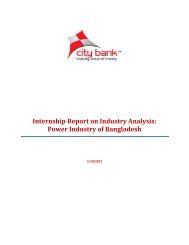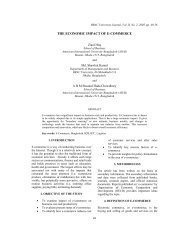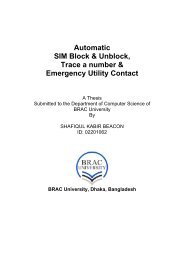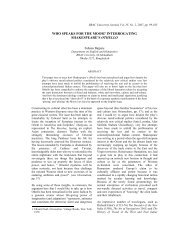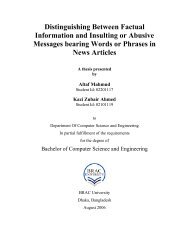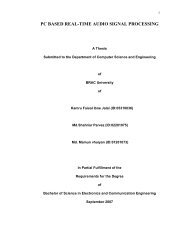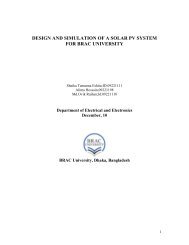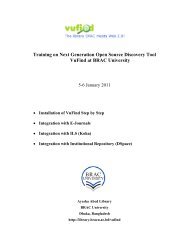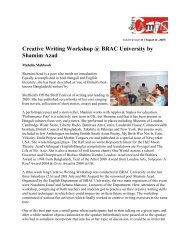LITERATURE SURVEY OF AUTOMATIC FACE RECOGNITION ...
LITERATURE SURVEY OF AUTOMATIC FACE RECOGNITION ...
LITERATURE SURVEY OF AUTOMATIC FACE RECOGNITION ...
Create successful ePaper yourself
Turn your PDF publications into a flip-book with our unique Google optimized e-Paper software.
facial hair, glasses, or facial jewelry, and over longer periods effects related to<br />
aging.<br />
Pose Some unavoidable problems appear in the variety of practical<br />
applications, such as, the people are not always frontal to the camera, so the<br />
pose problem is a big obstacle for the face recognition system to be prevalence.<br />
In essence, the difference between the same people under the varied poses is<br />
larger than the difference between the distinct persons under the same pose. So<br />
it is difficult for the computer to do the face identification when the poses of the<br />
probe and gallery images are different. Pose variation still presents a challenge<br />
for face recognition. Frontal training images have better performance to novel<br />
poses than do nonfrontal training images. For a frontal training pose, can<br />
achieve reasonable recognition rates of above 90%.<br />
Illumination Pure illumination changes on the face are handled well by<br />
current face recognition algorithms. However, face recognition systems have<br />
difficulties in extreme illumination conditions in which significant parts of the face<br />
are invisible. Furthermore, it can become particularly difficult when illumination is<br />
coupled with pose variation.<br />
Expression With the exception of extreme expressions such as scream,<br />
the algorithms are relatively robust to facial expression. Deformation of the mouth<br />
and occlusion of the eyes by eye narrowing and closing present a problem for the<br />
algorithms. Faces undergo large deformations under facial expressions. Humans<br />
can easily handle this variation, but the algorithms to have problems with the<br />
expression databases. Face recognition under extreme facial expression still<br />
remains an unsolved problem, and temporal information can provide significant<br />
additional information in face recognition under expression.<br />
A neutral face is a relaxed face without contraction of facial muscles and<br />
without facial movements. Face recognition systems can achieve high<br />
recognition rate for good quality, frontal view, constant lighting and only subtle<br />
expression or expressionless face images. The performance of face recognition<br />
system significantly decreases when there is a dramatic expression on the face.<br />
Therefore, it is important to automatically find the best face of a subject from the<br />
images. Using the neutral face during enrollment and when authenticating, so<br />
that we can find the neutral face of the subject from the six universal expression<br />
like. Happiness, sadness, disgust, anger, fear, surprise.<br />
20



